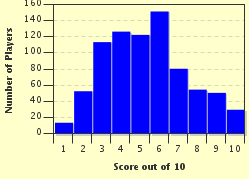Quiz Answer Key and Fun Facts
1. There are 17 species in this animal family, all of whom are to native to Africa with habitats ranging from the Namib Desert to the forests of South Africa and the mountains of northern Africa. They range in size from 4-12 inches long and eat mostly invertebrates such as insects, spiders, centipedes and earthworms. Which mammals are these?
2. Most people think that camels are either Bactrian or dromedary (also called Arabian), but there are in fact six species who belong to this family. Which of the other four, a native of the high alpine regions of the Andes and the national animal of Peru, is pictured here?
3. Part of the sub-order of ruminants that includes cattle, goats and sheep as well as the giraffe, this genus is native to southeast Asia, from southern China to Java and the Philippines. Which type of hornless ungulate is shown in this picture?
4. This family of even-toed ungulates are another close relative of the giraffe and the okapi. Native to North America, only four of the original 70-plus members of this family remain alive today. A member of which family is pictured here?
5. We move on now to carnivores and, specifically, to felines although this particular infra-order is more closely related to the hyena and mongoose than to the common cat. Native to Asia, Africa and southern Europe, they are the most primitive of all the carnivorous families. Which type of animal is pictured here?
6. We move on now to the largest family of carnivores in terms of number of species, and also one of the oldest. The pictured animal, though, is actually the smallest of all the carnivores, but still a fierce hunter capable of killing a rabbit ten times its size. Which type of animal is pictured here?
7. Another canine member of the carnivores, this time a close cousin of the raccoon. There are four species of this animal. Native to the Americas, these animals supplement their diet of spiders and other invertebrates with seasonal fruits such as plums and figs. Which type of animal is pictured here?
8. This family of eight species are sometimes called "scaly anteater" or "trenggiling". Native the the tropical regions of Africa and Asia, it is the only known mammal to have a covering of keratin scales over its skin. What type of animal is pictured here?
9. Also known as the spotted-tailed dasyure, the pictured animal is mainland Australia's largest living carnivorous marsupial. What type of animal is this?
10. With more than 100 species, we finish with the largest order of mammals found in the Western Hemisphere. Which animal is this, whose name means "white dog" or "white beast" in Algonquin?
Source: Author
EnglishJedi
This quiz was reviewed by FunTrivia editor
Tizzabelle before going online.
Any errors found in FunTrivia content are routinely corrected through our feedback system.


